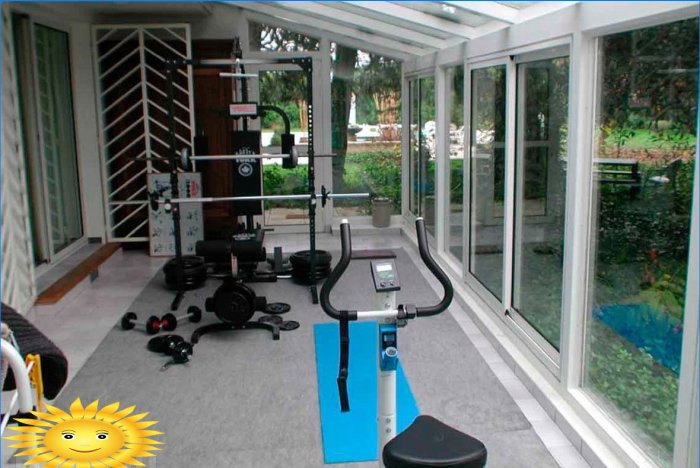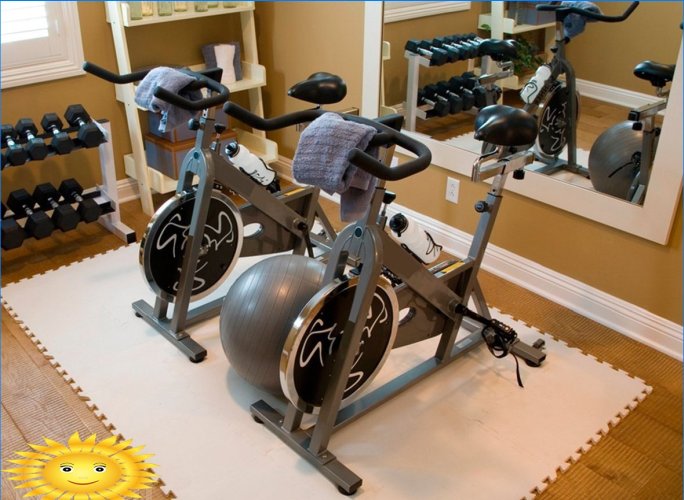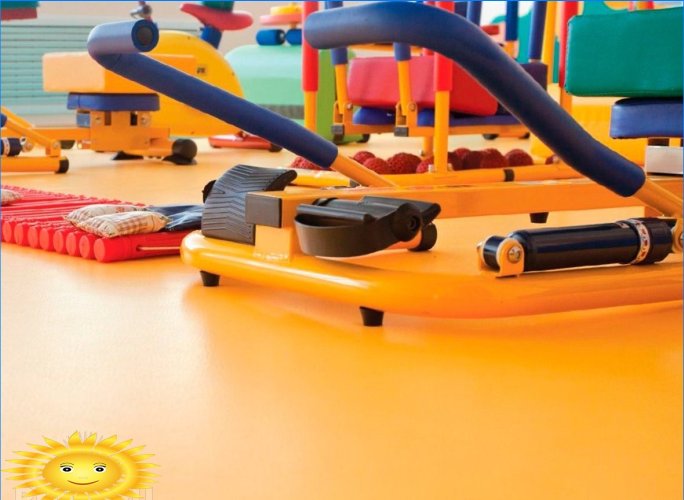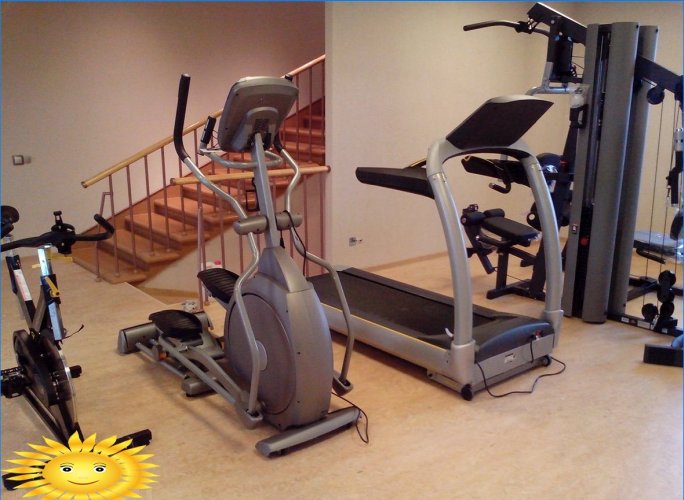
Before choosing a floor covering for a sports corner in a house or apartment, you should highlight the basic requirements for it:
- Smooth surface;
- ease of care and cleaning;
- safety;
- wear resistance, long service life;
- practicality.
Important!All sports exercises are vibration and loud sounds. Imagine that you are going to jump rope, how it will affect the neighbors below. Therefore, it is necessary to make a sound-absorbing floor. It is best to arrange a floating screed that will not extend directly to the walls. In this case, the sound will not propagate along the walls. Do not forget also about noise insulation materials, a special underlay for finishing the floor..

There are two main options for arranging flooring in a gym:
- modular;
- stationary.
A modular covering means all kinds of rugs, mats that are laid on the existing floor exactly in the area of the sports complex. Special rugs and mats are often placed, for example, under the children’s sports corner, in order to protect the child who decides to climb the wall bars.

A lot more costs and efforts will be taken by the arrangement of stationary flooring. Let’s take a look at the most popular and most suitable materials for a home gym:
- Carpet. For a sports corner, you should choose a carpet with a short pile, as dense as possible. A good choice would be tufted carpet, injury-proof and wear-resistant;

- Sports linoleum. Unlike the usual one, it has a reinforcing mesh that is able to evenly distribute loads and stabilize the coating. Good cushioning comes in handy in the gym. In addition, linoleum is very easy to care for;

- Self-leveling floor. Quite an expensive choice, but reliable, durable, easy to maintain and use. For a gym, a polyurethane self-leveling floor is better;
- Cork floor. Also an expensive option, but with excellent soundproofing qualities, shock-absorbing, very pleasant to the touch;

- Rubber modules. They are rarely used in houses and apartments, more often they are laid out, for example, the floor in the garage or an outdoor sports corner in the garden. But as a covering in a home gym, they are also suitable;

- Sports parquet. The most expensive option, more often used in large gyms, but at home it will look very stylish. Such a special multi-layer parquet with a shock-absorbing layer and anti-slip coating.


Choose your home gym flooring option according to your budget and needs. For one simulator and a place for gymnastics, a special rug will be enough, but for a full-fledged gym, a separate room, you should choose a more convenient and durable stationary coating option.

I’m curious about the factors to consider when selecting a flooring for a home gym. What materials are best suited for high-impact workouts? Are there any specific types that provide both durability and shock absorption? Additionally, what about ease of installation and maintenance? Would love some insights and recommendations from those experienced in setting up a home gym!